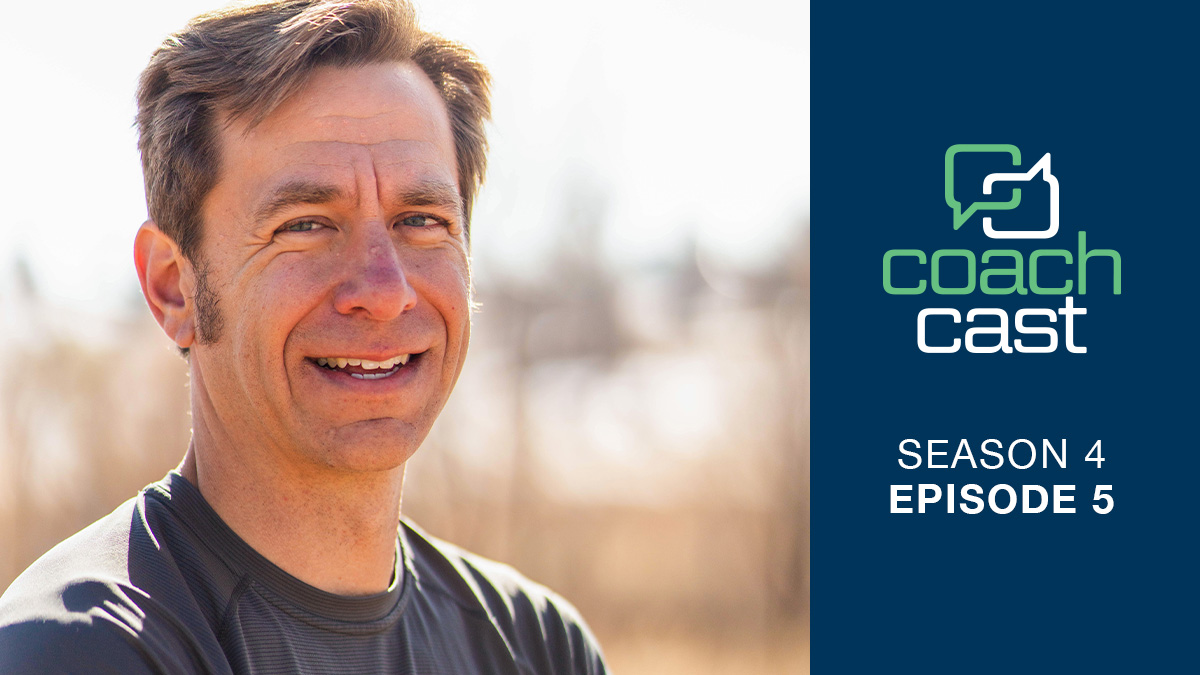Ultramarathon running is a complex sport. Jason Koop’s updated book, “Training Essentials for Ultrarunning,” dives into the complexity to help answer many of the questions that ultrarunners and other competitors face as endurance athletes. The book is filled with evidence-based methodologies that may be useful for athletes in other endurance sports beyond ultrarunning.
Koop is a leading authority and one of the most sought-after coaches in trail and ultrarunning. He has over 20 years of coaching experience and is the head coach at CTS Ultrarunning. He’s an ultrarunner in his own right, having completed a 250-mile race recently and is preparing for Hardrock 100 this summer.
Athletes looking for training guidance for ultra-distance sports beyond ultrarunning may find the evidence-based methodologies useful for their training. Koop self-published the book and hosts a podcast, Koopcast, centered on ultrarunning performance. You can find more information about him at jasonkoop.com.
STANDOUT QUOTES
“Ultramarathon athletes are starting to realize that if they put a logical structure and logical architecture around their training, they’re going to be much better off than if they just wing it. Because even when I first started coaching ultramarathons, the defacto was just doing as many miles as possible. Put as much time on your feet as you absolutely can, and the training advice was this very convoluted game of telephone between the kind of the elder statesmen and women in the sport that have been along around a long time. Passing their wisdom and their knowledge down from, you know, what they learned to the next person, the next person, the next person and as you’re aware, that only works for so long before the message kind of gets convoluted. And then you’re really not applying any logic other than, “Well, this worked for me, and that worked for that person.”
Training for an Ultra
I didn’t [see it like], “Hey, this is a longer marathon. Let me just extend normal marathon training.” I said, what are the demands of the event? How long [is] the event? What energy systems are being tapped into? What what’s gonna ail the athlete ultimately? And I built training interventions around that. And it just so happens that it is why — I’ll use the word wildly just to sensationalize it a little bit more — it is wildly different than what you would consider to be in a normal marathon program. And that strikes a lot of people as odd because it’s still quote-unquote running, but when you really think about it critically, the intensity is markedly lower than it is in a marathon for most people. You introduce the concept of running uphill and running downhill, which are really two different sports as compared to flat-level running. In fact, I consider those four sports within the sport of ultramarathon running: walking, uphill running, downhill running and flat level running. And then you look at the sheer nutritional requirements that there are for ultramarathon running, and…you can’t screw it up, right? There’s a huge penalty for screwing that up in ultrarunning because you’re exposed for so long as compared to marathon running where, if you screw it up, you’ve got, you know, a few miles or maybe several miles of suffering to do. In an ultra, that could be more than half the race, and that penalty starts to compound on itself. So, you look at all those things and what I eventually came away with is we need to just treat this as a whole separate sport. The word “ultramarathon” really does the sport a disservice in terms of training for it. Let’s look at logical training interventions and how to structure training that [is] specifically tailored to this unique sport.”
“…at the end of the day, if you start your training with the things that are the least specific to the event and then you gradually move towards the things that are the most specific to the event, you’re gonna get 90% of the stuff right. And in an ultramarathon situation, in almost all cases — there are some exceptions to this, very rare exceptions — but in almost all cases, that means your program goes from high-intensity low-volume early on to low-intensity high-volume later in the year. It really really really is that simple, and you don’t need to make it any more complicated than that with silly interval design or anything like that.”
Injury Prevention
“A lot of people will strength train very specifically to prevent injury, and the research on that is really weak, to be honest with you. And I’ll challenge anybody out there to come at me with, you know, with good controlled studies. Studies plural, that show a marked decrease in injury, injury risk or injury prevalency after undergoing a strength training program. I realize that they’re all out there, but what I’m saying is they’re all pretty weak. And in particular, when you compare it to the studies that look at rest either in the form of more sleep or in the flavor of more rest days…when you compare the quote-unquote injury prevalency rate or how, you know, however, the research design is looking at it, it’s typically like a five or 10 fold advantage favoring recovery or rest versus a strength training intervention. That’s not to say that it’s five or 10 times better, but it’s a more efficacious intervention to use if you’re specifically looking at preventing injury. Meaning, if you just incorporate more rest or smarter rest or both of those versus strength training — specifically for injury — you’re probably…definitely getting more bang for your buck on the sleep and the rest side. And there’s I know that there’s going to be a ton of, you know, personal trainers and coaches and things like that that are, you know, throwing tomatoes and eggs at me right now but really, when you look at the research out it’s very very hard to conclude otherwise.”
Ultrarunning is something that favors people who have very well-developed mental skills. And the reason for that is this very interesting phenomenon that happens in endurance sport called the psychobiological model of fatigue and perceived endpoint interaction.
Mental Skills
“Ultrarunning is something that favors people who have very well-developed mental skills. And the reason for that is this very interesting phenomenon that happens in endurance sport called the psychobiological model of fatigue and perceived endpoint interaction. I know that sounds like a lot of psycho-babble. But when you think about this when you do any normal endurance task — I’m going to go out and do an interval, I’m going to go out and run a marathon — subconsciously, what you are doing is, every so often, you’re drawing an internal line between your current level of exertion and what you think you can maximally tolerate…We see this at the Leadville 100 very, very, very apparently. They’ll drop out of a race. They’ll get in their car. They’ll go to the hotel, and they’ll immediately regret what they did within 10 minutes. And they came to [the] conclusion that they needed to drop out based off of this perceived exertion endpoint interaction.”
Race Tapering
“Because the intensity [in utlrarunning] is so low, this notion that you need to be sharp and ready, which we see in a lot of other traditional endurance sports, is just not that important. In fact, your taper going into a race shouldn’t look all that different as compared to a normal de-loading week. Maybe it’s a little bit longer or a little bit deeper, but we don’t need to make it overly elaborate like we do. Especially like the triathlon and the marathon world where you know you see these exponential tapers that are kind of like down to the minute or whatever. In ultramarathon running, it’s just not necessary to do that. So train first and then rest a little bit. You’re gonna get all the adaptation that you do well…this is what I always say, most people who are extremely concerned about their taper haven’t trained enough. So it’s just their psychological inadequacies kind of coming out. Like thinking, “Oh my god. Should I take Tuesday off, or should I run for 40 minutes?” That’s not material in your whole tapering process.”
Resources
Jason Koop on Instagram, Twitter and YouTube.
For more on his book and audiobook, visit jasonkoop.com.



